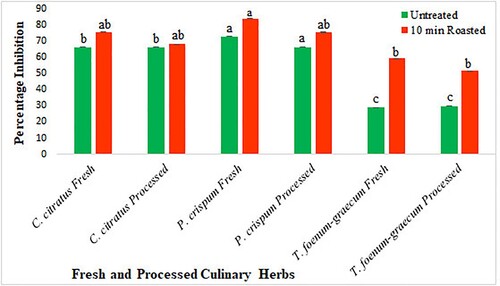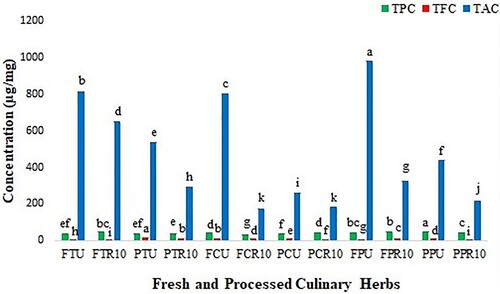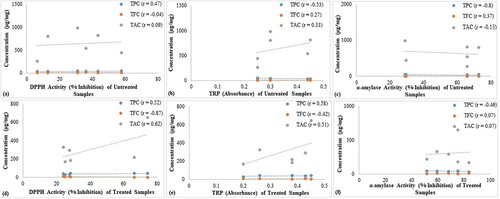Figures & data
Table 1. Acronyms used for the selected culinary herbs at different time intervals of heat-treatments.
Figure 1. Effect of different heating methods and time on antioxidant activity of selected culinary herbs. (a) DPPH scavenging assay (b) Total reducing power assay. Data represent the mean of three replicates, and the standard deviation is represented by the error bars.

Table 2. Antibacterial activity indices of selected fresh and processed culinary herbs.
Figure 2. Patterns of antidiabetic activity in untreated and heat-treated samples of fresh and processed selected herbs. UT: Untreated; R: Roasted. Data represent the mean of two replicates.

Table 3. Antihemolytic activity of fresh and processed samples of P. crispum observed at different concentrations.
Figure 3. Total phenolic, flavonoid and alkaloid contents detected in the untreated and treated samples of fresh and processed selected culinary herbs.

Figure 4. Correlation analysis of bioassays and phytochemicals (a) DPPH activity of untreated herbs (b) TRP of untreated herbs (c) α-amylase activity of untreated herbs (d) DPPH activity of roasted herbs (e) TRP of roasted herbs (f) α-amylase activity of roasted herbs (r = Correlation Coefficient).

Table 4. Compounds identified at respective retention times in selected P. crispum samples using the GCMS method.
